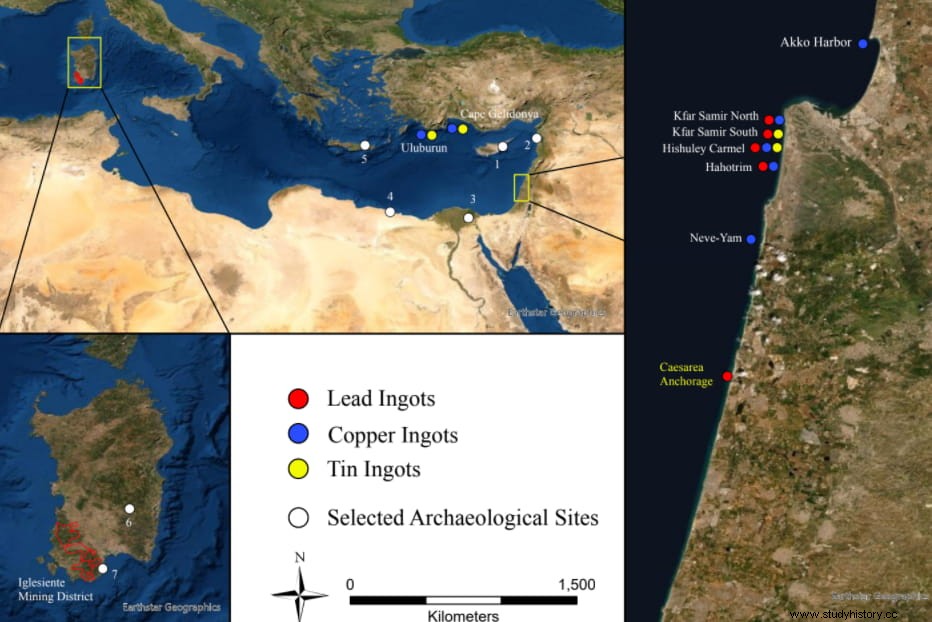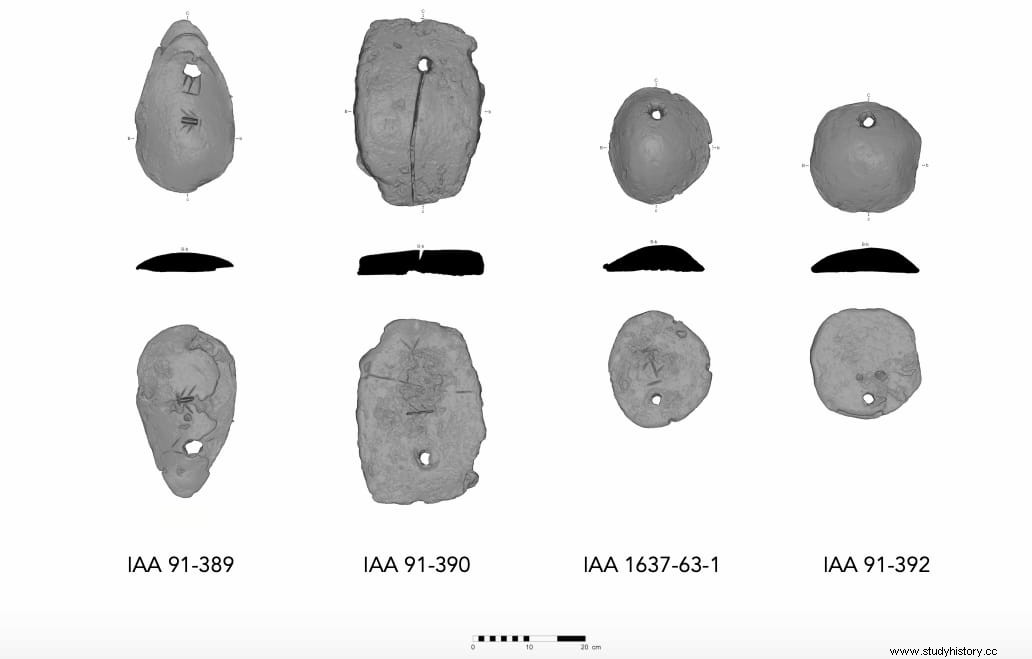The Late Bronze Age of the Mediterranean basin was a time characterized by complex supra-regional relations and diplomacy, with trade and gift-exchange being common practices.
Lead ingots and stone anchors found among shipwreck cargoes off the coast of Caesarea, Israel, reveal hitherto unknown trade links between distant countries, shedding light on commercial and diplomatic life in the area 3,200 years ago. years.
Hebrew University of Jerusalem (HU) Institute of Archeology Professor Naama Yahalom-Mack collaborated with Professor Yigal Erel from the HU Institute of Earth Sciences to determine the origin of four lead ingots among the cargo of a shipwreck near the port of Caesarea.

By studying the origin of the lead and comparing their finds with other archaeological artifacts from the Mediterranean, the researchers were able to show that the ingots were made from lead mined on the central Mediterranean island of Sardinia.
Furthermore, the ingots were incised with Cypro-Minoan markings which, although not deciphered to date, are known to have been used in Cyprus during the Late Bronze Age. Consequently, the researchers concluded that there were extensive trade links between the two populations for the purpose of transporting raw materials.
According to Yahalom-Mack, this study shows us how active the Cypriots were in trade during the same period, and how far they were willing to go - given that the islands of Cyprus and Sardinia are located more than 2,500 kilometers from each other. another- to import lead, used to create luxury items at the end of the time.

We believe that, along with lead, they also imported tin, a highly coveted metal in and around Cyprus to make bronze. These three metals - copper, lead and tin - were sold to port cities along the coast, including the coasts of present-day Israel her, she added.
The findings were published in the Journal of Archaeological Science:Reports February and were carried out in collaboration with Professor Assaf Yasur-Landau and Dr. Ehud Galili, from the Institute of Maritime Studies of the University of Haifa.
